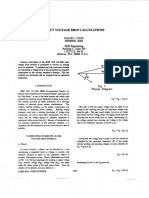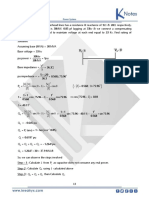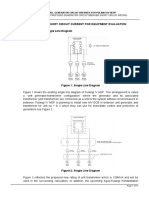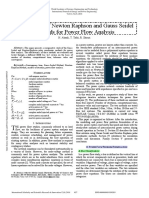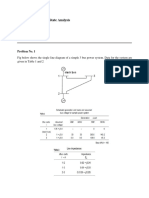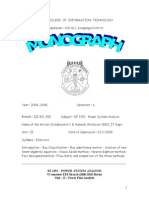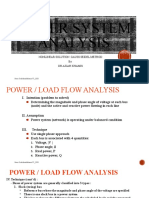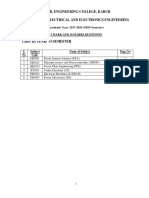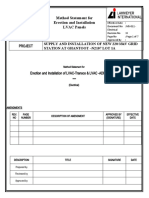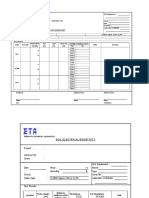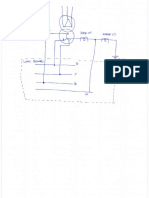0% found this document useful (0 votes)
649 views22 pagesModelling of Load Flow Analysis in ETAP Software
This document provides an example power flow analysis using the Gauss-Seidel method. It includes forming the bus admittance matrix, calculating voltage phasors at load buses, determining slack bus real and reactive power, and calculating line flows and losses.
Uploaded by
vipinrajCopyright
© © All Rights Reserved
We take content rights seriously. If you suspect this is your content, claim it here.
Available Formats
Download as PDF, TXT or read online on Scribd
0% found this document useful (0 votes)
649 views22 pagesModelling of Load Flow Analysis in ETAP Software
This document provides an example power flow analysis using the Gauss-Seidel method. It includes forming the bus admittance matrix, calculating voltage phasors at load buses, determining slack bus real and reactive power, and calculating line flows and losses.
Uploaded by
vipinrajCopyright
© © All Rights Reserved
We take content rights seriously. If you suspect this is your content, claim it here.
Available Formats
Download as PDF, TXT or read online on Scribd
/ 22





